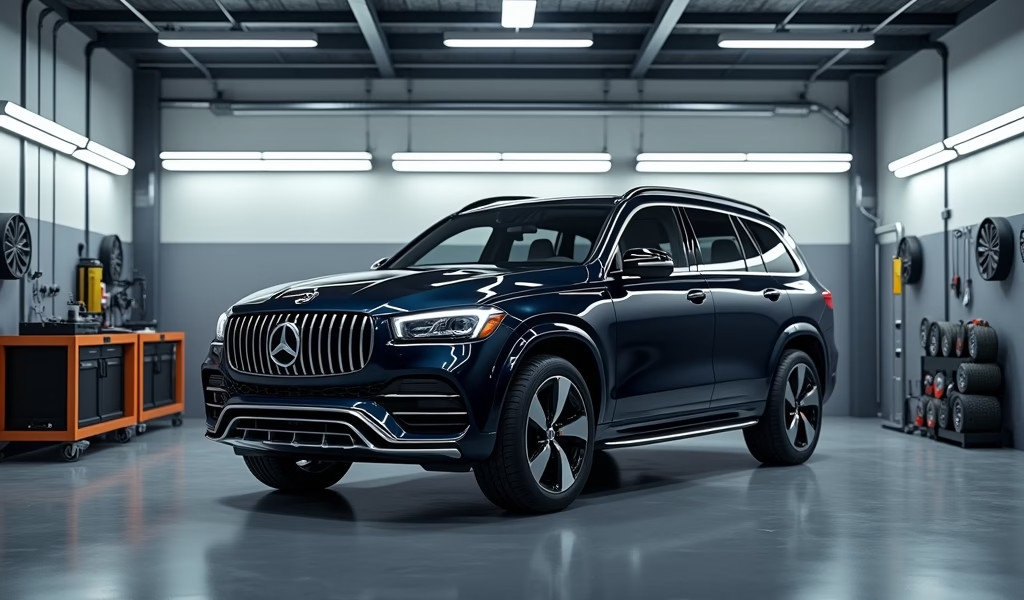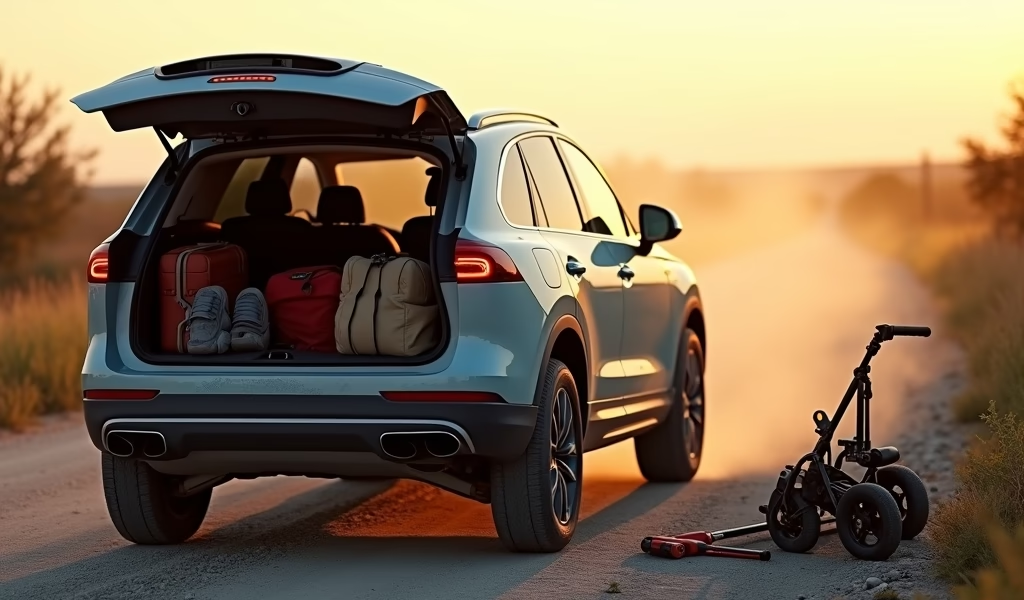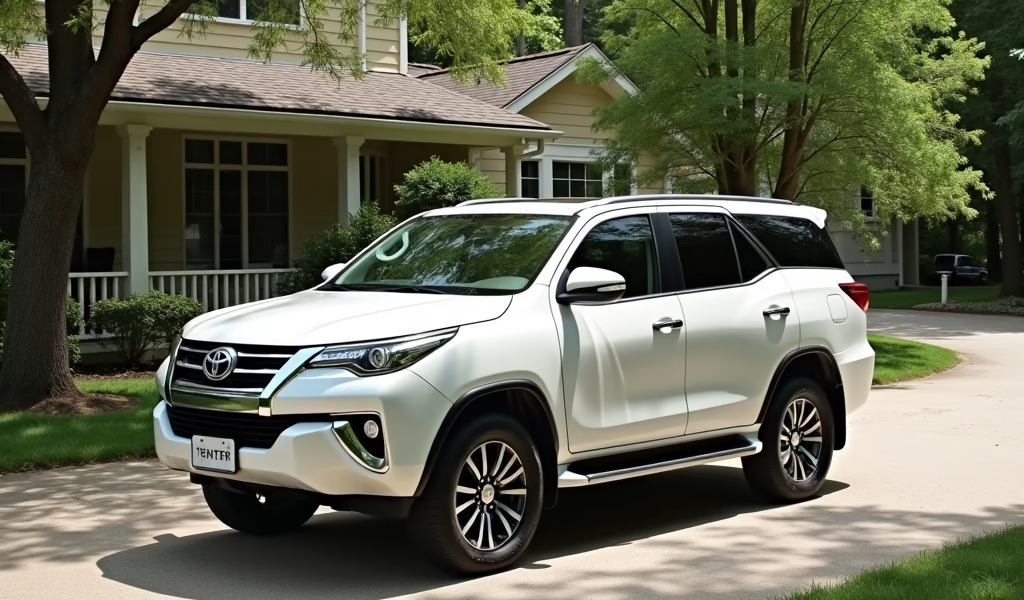Overview
This article provides seven essential care tips for 7-seater car rentals, including pre-rental inspection, understanding vehicle dimensions, mastering seating configurations, maximizing fuel efficiency, maintaining cleanliness, managing cargo properly, and preparing thoroughly for vehicle return. These mechanic-approved strategies help travelers avoid extra charges while ensuring comfort and safety throughout their journey.
Table of Contents
- Introduction
- Pre-Rental Inspection: Your First Defense
- Understanding Your 7 Seater’s Dimensions
- Mastering the Seating Configuration
- Fuel Efficiency: Getting More Miles for Your Money
- Cleaning and Maintenance During Your Rental
- Smart Loading and Cargo Management
- Return Preparation: Finishing Strong
- Conclusion
- Frequently Asked Questions
Introduction
When it comes to group travel, a 7 seater car rental offers the perfect blend of space, comfort, and practicality. Whether you’re planning a family vacation, a road trip with friends, or need extra space for a special occasion, these versatile vehicles can make all the difference in your travel experience.
As a master technician with over 15 years in the automotive industry, I’ve seen firsthand how proper vehicle care can transform your rental experience from good to great. The right approach not only ensures a comfortable ride but also helps you avoid those dreaded extra charges when returning your vehicle.
In this guide, I’ll walk you through seven proven care tips that will help you get the most out of your 7 seater car rental. These practical strategies come straight from the garage to you, with no technical jargon or complicated procedures—just straightforward advice that works.
Pre-Rental Inspection: Your First Defense
Before you even think about loading up that spacious 7 seater, take 10 minutes for a thorough inspection. This isn’t just a suggestion—it’s your financial safety net.
Start by circling the vehicle with your smartphone camera ready. Document every scratch, dent, or imperfection you find, no matter how minor. Pay special attention to:
- Bumpers (front and rear)
- Wheel rims and hubcaps
- Side panels and doors
- Windshield and windows (look for chips or cracks)
- Undercarriage (if visible)
Inside, test every function. Does the air conditioning blow cold in all three rows? Do the seats fold as they should? Check those entertainment systems too—a non-functioning DVD player can make for a long trip with kids.
Most importantly, get written confirmation of all pre-existing damage from the rental agent before driving away. This simple step has saved my customers hundreds in disputed damage claims. Remember: what you don’t document now might become your responsibility later.

Understanding Your 7 Seater’s Dimensions
Transitioning from driving a standard sedan to maneuvering a 7 seater vehicle requires some adjustment. These vehicles are typically longer, wider, and taller than what you might be used to, and understanding these dimensions will save you from scrapes, scratches, and embarrassing parking lot incidents.
First, take a moment to familiarize yourself with your vehicle’s height. Most 7 seaters stand between 5’6″ and 6’2″ tall, making some parking garages and drive-throughs potentially problematic. According to a study by the Insurance Institute for Highway Safety, underestimating vehicle height is one of the most common causes of roof damage in rental vehicles.
Next, get comfortable with the turning radius. Before hitting busy areas, practice a few three-point turns and parallel parking attempts in an empty lot. When parking, remember that your vehicle is wider than standard spaces were designed for—leaving you less margin for error on either side.
Using your mirrors becomes even more crucial with a larger vehicle. Adjust them properly before departing, ensuring you can see the road behind you clearly, especially if the third row is occupied or if you’re carrying cargo that might obstruct your rearview.
Finally, be mindful of your vehicle’s increased blind spots. Shoulder checks are essential, and if your rental has blind-spot monitoring, learn how to use it effectively before merging or changing lanes on busy highways.
Mastering the Seating Configuration
The magic of a 7 seater lies in its versatility, but only if you know how to harness it. Modern 7 seaters offer remarkable flexibility that can transform from people-mover to cargo hauler in minutes.
First, take time to understand your specific model’s seating layout. Most follow either a 2-3-2 configuration (two front seats, three in the middle row, two in back) or a 2-2-3 arrangement. Each has its advantages: the former offers more middle-row space, while the latter provides easier access to the third row.
For maximum comfort on longer journeys, consider your passenger placement carefully. The third row is typically less spacious and best suited for children or shorter adults. For families with small children, the middle row often has the most accessible car seat anchors and offers the best balance of safety and convenience.
Remember that seat adjustment isn’t just about folding seats down. Many modern family vehicles feature seats that slide, recline, and sometimes swivel. Taking five minutes to explore these options can dramatically improve passenger comfort.
If you’re transporting both people and cargo, experiment with different configurations. Many 7 seaters allow you to fold down specific seats individually, letting you accommodate that awkwardly shaped luggage while still seating five or six people comfortably.
Fuel Efficiency: Getting More Miles for Your Money
Let’s be honest—a 7 seater will never match the fuel economy of a compact car. But with some strategic driving and maintenance habits, you can significantly stretch each gallon during your rental period.
Start by understanding your vehicle’s optimal cruising speed. Most larger vehicles achieve their best fuel economy between 55-65 mph. Pushing beyond 70 mph can reduce efficiency by up to 15%, according to the U.S. Department of Energy. That extra speed might save you minutes but will cost you dollars.
Proper tire inflation is particularly crucial for heavier vehicles. Even being just 5 PSI under the recommended pressure (usually found on a sticker inside the driver’s door jamb) can reduce fuel economy by 3%. For a 7 seater on a long trip, that adds up quickly.
Your driving style makes a surprising difference too. Gentle acceleration, smooth braking, and maintaining consistent speeds will reward you with better mileage. Think of the gas pedal as connected directly to your wallet—because it essentially is!
Use the vehicle’s features wisely. Cruise control can help maintain steady speeds on highways, while climate control is best used moderately—excessive air conditioning can increase fuel consumption by up to 25% in some vehicles.
Finally, plan your routes thoughtfully. A slightly longer route with steady driving often uses less fuel than a shorter one with frequent stops and starts. Navigation apps can help identify the most efficient path to your destination, not just the shortest.

Cleaning and Maintenance During Your Rental
A 7 seater filled with passengers can quickly transform from showroom-clean to alarmingly lived-in, especially on longer trips. Implementing simple daily maintenance routines will keep things pleasant for everyone and help avoid cleaning fees upon return.
Start by establishing ground rules with all passengers. A “leave no trace” approach works wonders—each person takes responsibility for their own space and belongings. Designate a small trash bag for each row and empty them at every fuel stop.
For families with younger children, spills are inevitable. Pack a small cleaning kit including wet wipes, paper towels, and a travel-size upholstery cleaner. Addressing spills immediately prevents stains and odors that can become permanent fixtures in rental vehicles.
At least once every two days, take five minutes for a quick reset. Remove trash, wipe down high-touch surfaces like door handles and seat belt buckles, and reorganize displaced items. This “little and often” approach prevents the overwhelming cleanup that would otherwise await you at journey’s end.
Pay attention to the exterior too, especially if you’re traveling through areas with harsh environmental conditions. A quick run through a touchless car wash can remove corrosive road salt in winter or insect buildup during summer journeys. This small investment protects both the vehicle and your security deposit.
For rentals extending beyond a week, consider a more thorough mid-trip cleaning. A portable vacuum for crumbs and dirt, plus a thorough wipe-down of all surfaces, can make the second half of your journey as pleasant as the first.
Smart Loading and Cargo Management
The generous cargo capacity of a 7 seater is a blessing, but only when used wisely. Proper loading isn’t just about making everything fit—it’s about safety, vehicle handling, and protecting both your belongings and the rental interior.
Start with the basics: heavy items should go low and centered, preferably forward of the rear axle. This keeps the vehicle’s center of gravity lower and improves handling. Lighter, softer items can go on top or toward the back.
Be mindful of the weight distribution between passengers and cargo. An overloaded rear can affect steering and braking performance—sometimes subtly enough that you won’t notice until you need to make an emergency maneuver.
Secure everything properly. Even at moderate speeds, unsecured items become projectiles during sudden stops. Use cargo nets, straps, or bungee cords to keep items from shifting. The few dollars these cost at a local store are well worth the added safety and interior protection.
When loading with the third row folded, create a level surface where possible. This prevents items from rolling forward into passenger areas during braking. Some vehicles come with organizers or dividers—use them if available.
Finally, never block your rearward visibility completely. If you must carry bulky items that obscure the rear window, adjust your driving accordingly and rely more on your side mirrors. Better yet, consider roof storage options if your rental agreement permits them.
Return Preparation: Finishing Strong
The final 24 hours of your rental period are crucial for ending your experience on a positive note and avoiding unexpected charges. A methodical approach to vehicle return can save you both money and hassle.
Start with a thorough search for personal items. The numerous storage compartments in a 7 seater are notorious for swallowing phones, toys, and other small belongings. Check under and between seats, door pockets, center consoles, and that often-forgotten third row.
Clean the interior to a reasonable standard. While most rental agreements don’t require professional detailing, returning a vehicle with obvious food spills or excessive dirt can trigger cleaning fees. A quick vacuum and wipe-down of surfaces shows respect for both the vehicle and the next renter.
Document the vehicle’s condition just as you did during pickup. Take date-stamped photos of the exterior from multiple angles and any interior areas that might be questioned. This creates a clear before-and-after record that protects you from charges for pre-existing damage.
Follow the fuel policy exactly as specified in your agreement. Most companies require the same fuel level as at pickup—typically full. Keep your final fuel receipt as proof of compliance, and refuel close to the return location to ensure the gauge doesn’t drop.
Allow extra time for the return process, especially during peak periods. Rushing through the final inspection increases the likelihood of overlooking important details or missing documentation opportunities. That extra fifteen minutes could save you significant headaches later.
Conclusion
A 7 seater car rental opens up possibilities that smaller vehicles simply can’t match, offering the freedom to travel comfortably with family or friends while bringing along everything you need for your journey. By following these seven care tips, you’ll not only protect yourself financially but also enhance everyone’s travel experience.
Remember that caring for a rental isn’t just about avoiding charges—it’s about creating the best possible environment for your travel companions. A well-maintained vehicle with thoughtfully organized space becomes an asset to your trip rather than just a means of transportation.
Whether you’re exploring new destinations with family or embarking on adventures with friends, the right vehicle properly cared for makes all the difference. Apply these mechanic-approved strategies on your next 7 seater rental, and you’ll be amazed at how much more enjoyable the journey becomes.
The open road awaits you and your passengers. With these insights in hand, you’re now prepared to make the most of your spacious rental while ensuring a smooth, stress-free return. Happy travels!
Frequently Asked Questions
What’s the typical fuel economy for a 7 seater rental?
Most 7 seater vehicles average between 18-25 mpg combined, depending on the model and driving conditions. Highway driving typically yields better efficiency than city driving with frequent stops.
Do I need a special license to drive a 7 seater rental?
No, a standard driver’s license is sufficient for most 7 seater rentals in the United States and most countries. These vehicles are classified as regular passenger vehicles, not commercial vehicles.
How much extra should I budget for fuel compared to a standard car?
Plan for approximately 30-40% higher fuel costs compared to a standard sedan. This varies based on the specific model, driving conditions, and load carried.
Can I use roof racks or cargo carriers on my 7 seater rental?
Many rental companies allow roof storage, but always check your specific rental agreement first. Some companies restrict roof accessories or require prior approval and additional fees.
What’s the best seating arrangement for children in a 7 seater?
For families with child safety seats, the middle row typically offers the most accessible LATCH anchors and easier access. Keep children away from side-impact zones when possible, with the center positions generally considered safest.

